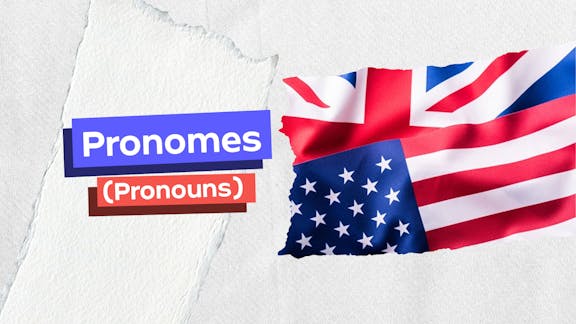Conforme as informações apresentadas no segundo parágrafo,
Leia o texto para responder à questão.
Disparity in life spans of the rich and the poor is growing
Sabrina Tavernise
February 12, 2016

Experts have long known that rich people generally
live longer than poor people. But a growing body of data
shows a more disturbing pattern: Despite big advances
in medicine, technology and education, the longevity gap
between high-income and low-income Americans has been
widening sharply.
The poor are losing ground not only in income, but also
in years of life, the most basic measure of well-being. In the
early 1970s, a 60-year-old man in the top half of the earnings
ladder could expect to live 1.2 years longer than a man of
the same age in the bottom half, according to an analysis
by the Social Security Administration. Fast-forward to 2001,
and he could expect to live 5.8 years longer than his poorer
counterpart.
New research released this month contains even more
jarring numbers. Looking at the extreme ends of the income
spectrum, economists at the Brookings Institution found that
for men born in 1920, there was a six-year difference in life
expectancy between the top 10 percent of earners and the
bottom 10 percent. For men born in 1950, that difference had
more than doubled, to 14 years. For women, the gap grew to
13 years, from 4.7 years. “There has been this huge spreading
out,” said Gary Burtless, one of the authors of the study.
The growing chasm is alarming policy makers, and has
surfaced in the presidential campaign. During a Democratic
debate, Senator Bernie Sanders and Hillary Clinton expressed
concern over shortening life spans for some Americans. “This
may be the next frontier of the inequality discussion,” said
Peter Orszag, a former Obama administration official now at
Citigroup, who was among the first to highlight the pattern.
The causes are still being investigated, but public health
researchers say that deep declines in smoking among the
affluent and educated may partly explain the difference.
Overall, according to the Brookings study, life expectancy
for the bottom 10 percent of wage earners improved by just
3 percent for men born in 1950 compared with those born
in 1920. For the top 10 percent, though, it jumped by about
28 percent. (The researchers used a common measure – life
expectancy at age 50 – and included data from 1984 to 2012.)
(www.nytimes.com. Adaptado.)
Leia o texto para responder à questão.
Disparity in life spans of the rich and the poor is growing
Sabrina Tavernise
February 12, 2016

Experts have long known that rich people generally live longer than poor people. But a growing body of data shows a more disturbing pattern: Despite big advances in medicine, technology and education, the longevity gap between high-income and low-income Americans has been widening sharply.
The poor are losing ground not only in income, but also in years of life, the most basic measure of well-being. In the early 1970s, a 60-year-old man in the top half of the earnings ladder could expect to live 1.2 years longer than a man of the same age in the bottom half, according to an analysis by the Social Security Administration. Fast-forward to 2001, and he could expect to live 5.8 years longer than his poorer counterpart.
New research released this month contains even more jarring numbers. Looking at the extreme ends of the income spectrum, economists at the Brookings Institution found that for men born in 1920, there was a six-year difference in life expectancy between the top 10 percent of earners and the bottom 10 percent. For men born in 1950, that difference had more than doubled, to 14 years. For women, the gap grew to 13 years, from 4.7 years. “There has been this huge spreading out,” said Gary Burtless, one of the authors of the study.
The growing chasm is alarming policy makers, and has surfaced in the presidential campaign. During a Democratic debate, Senator Bernie Sanders and Hillary Clinton expressed concern over shortening life spans for some Americans. “This may be the next frontier of the inequality discussion,” said Peter Orszag, a former Obama administration official now at Citigroup, who was among the first to highlight the pattern. The causes are still being investigated, but public health researchers say that deep declines in smoking among the affluent and educated may partly explain the difference.
Overall, according to the Brookings study, life expectancy for the bottom 10 percent of wage earners improved by just 3 percent for men born in 1950 compared with those born in 1920. For the top 10 percent, though, it jumped by about 28 percent. (The researchers used a common measure – life expectancy at age 50 – and included data from 1984 to 2012.)
(www.nytimes.com. Adaptado.)
Gabarito comentado
Da leitura do segundo parágrafo depreende-se: a) pobres tem perdido terreno não apenas em renda como também na medida mais básica de bem-estar: a expectativa de vida; b) no inicio dos anos 70, a expectativa de vida de um homem rico de 60 anos era de 1,2 anos a mais que a de um homem pobre na mesma idade; c) em 2001, esta diferença subiu para 5,8 anos.
Vejamos, então, as alternativas:
Alternativa A.
A alternativa A é FALSA pois apenas o bem-estar dos pobres está em declínio nos Estados Unidos.
Alternativa B.
Exato. Se a diferença no início dos anos 70 era de 1,2 anos e, em 2001, subiu para 5,8 anos, temos um aumento de 4,6 anos. Quase 5 vezes. A alternativa B é VERDADEIRA.
Alternativa C.
A alternativa é FALSA porque não temos dados atuais. Os dados trazidos são do início dos anos 70 e de 2001 (Observe que o paratexto nos informa que o texto é de 2016.).
Além disso, se trata de um intervalo (de tanto a tanto), a diferença de expectativa de vida em 2001 é de 5,8 anos.
Alternativa D.
FALSO. A medida mais básica do bem-estar social é, justamente a expectativa de vida, que é menor entre os pobres.
Alternativa E.
A alternativa E também é FALSA pois a análise maximiza a desigualdade social, eis que aponta aumento na diferença de expectativa de vida entre ricos e pobres.
RESPOSTA: B






